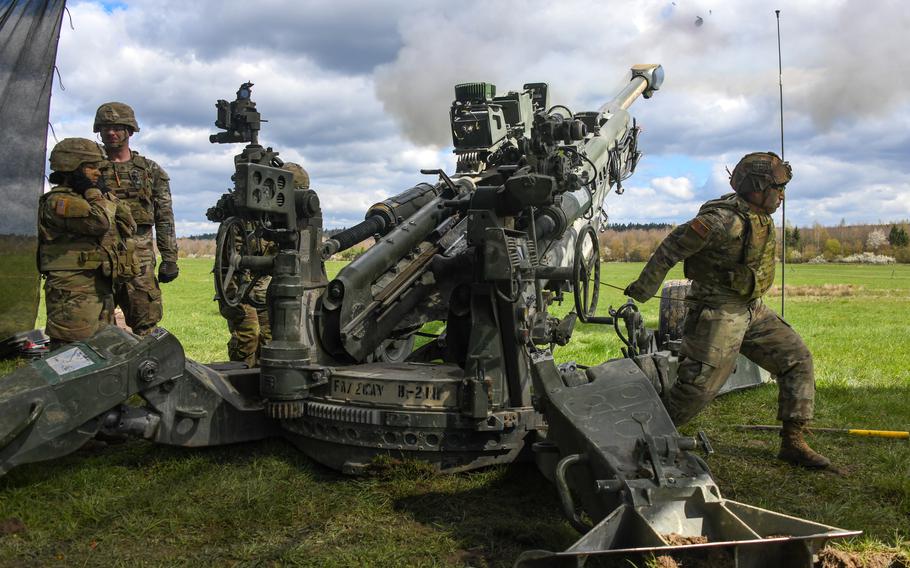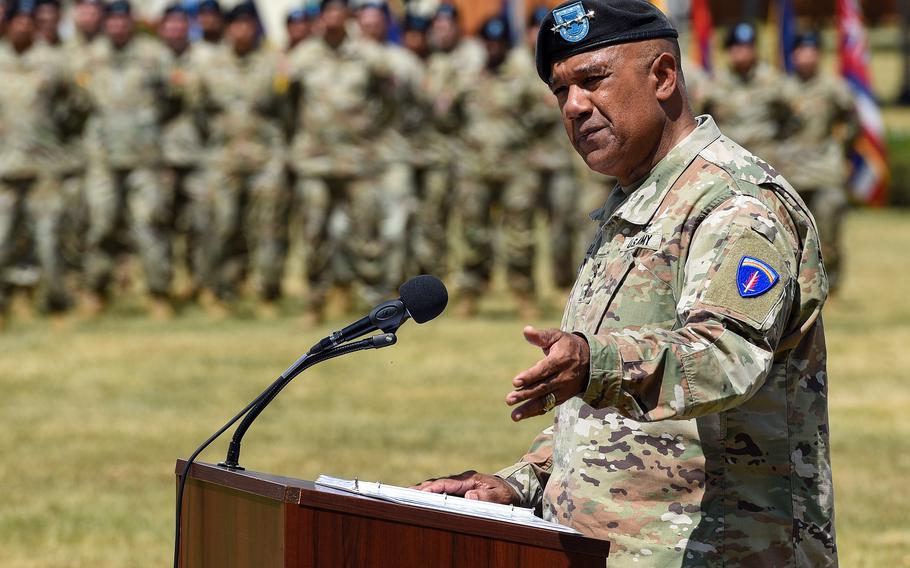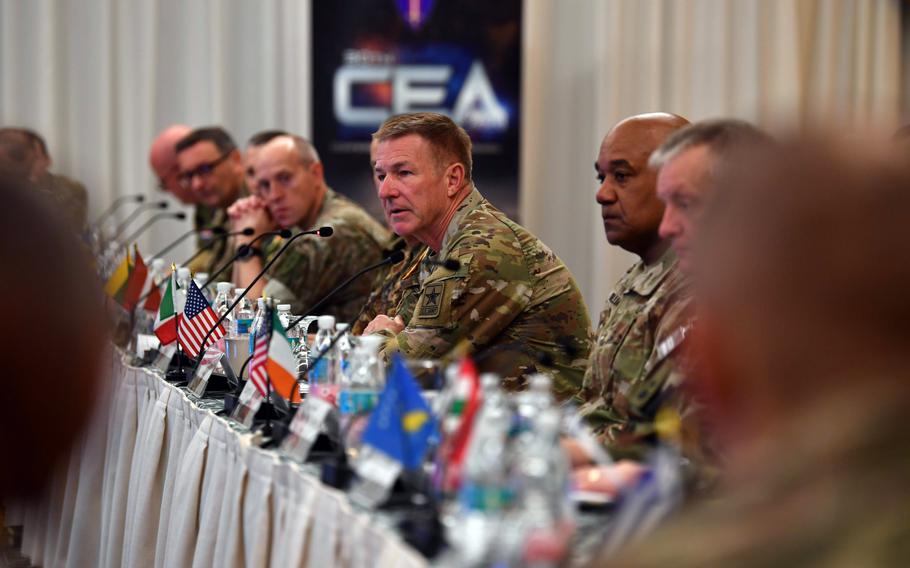
U.S. 2nd Cavalry Regiment soldiers fire an M777 howitzer at Grafenwoehr Training Area, Germany, April 26, 2023. U.S. Army Europe and Africa commander Gen. Darryl A. Williams said at a European ground forces meeting in Garmisch-Partenkirchen, Germany, on June 23 that new NATO defense plans are being developed in the coming weeks that will inform how U.S. troops fight if war breaks out. (Markus Rauchenberger/U.S. Army)
STUTTGART, Germany — New allied defense plans for Europe may provide the kind of granular detail typical of the Cold War, when American troops in Germany knew what territory they would be defending if war broke out, the top U.S. Army commander in Europe said Friday.
Gen. Darryl Williams, head of U.S. Army Europe and Africa, said the coming weeks will be pivotal in bringing to fruition a NATO defense strategy that has been many months in the making.
“Once we get the regional plans in order, once we can figure out what tools we'll need to do that mission, we'll be able to determine where and when we'll have to fight,” Williams told reporters.
Williams said the plans being put in place harken back to his time as a young lieutenant in Germany during the Cold War.
“I knew where my artillery battery was going to go, what town and those sorts of things,” he said. “So we look forward to a time here very quickly, where we'll be able to get that kind of clarity to the mission sets as we go forward and fight.”
Those plans and a new NATO force model involving up to 300,000 troops operating at higher alert are expected to be approved next month when President Joe Biden and other heads of state meet for a summit in Vilnius, Lithuania.

U.S. Army Europe and Africa commander Gen. Darryl A. Williams speaks during a ceremony at Grafenwoehr, Germany, June 20, 2023. Williams said at the end of a meeting of European ground force commanders June 23 in Garmisch-Partenkirchen that the coming weeks will be pivotal in developing a new NATO defense strategy. (Markus Rauchenberger/U.S. Army)
Williams’ comments came at the end of a meeting of ground force commanders in Europe, who were gathered this week for talks in Garmisch-Partenkirchen, Germany. Army Chief of Staff Gen. James McConville also was on hand.
During the meetings, the Army commanders focused on defense plans for Europe and also got updates from Ukrainian counterparts about the state of the recently launched offensive against Russian forces.
So far, Ukraine’s offensive has gone slowly as troops battle against entrenched Russian positions.
But indications are that Kyiv is poised to step up the pace of fighting as Western-trained heavy brigades begin to make their move. Those units, totaling nine brigades of some 36,000 troops, recently entered the fight, The New York Times reported Friday. Expectations are running high that those units will be a game changer for Ukraine.
Williams declined to comment on whether those units had indeed entered the battle in force. However, he said Ukraine’s military has been well-trained at the U.S. bases in Grafenwoehr and Hohenfels, as well as other parts of Europe.
At the Army’s training sites in Germany, breach complexes were constructed for Ukrainian forces, where they could rehearse the kinds of maneuvers needed to break through Russian positions, Williams said.
“That's exactly the sort of mission sets they're facing now,” Williams said.
Russia’s attack sparked a major training initiative to support Ukraine and also prompted the deployment of more American soldiers within NATO territory to guard against any further Russian aggression.
Since Russia’s February 2022 invasion, thousands of additional troops have rotated through Europe, many on six -to-nine-month missions away from home.

Army Chief of Staff Gen. James McConville, center, speaks during a meeting of ground force commanders in Europe, who were gathered this week for talks in Garmisch-Partenkirchen, Germany. On McConville's left is Gen. Darryl Williams, commander of U.S. Army Europe and Africa. (Twitter )
McConville said the “operations tempo” for the Army as a whole and the demands being put on soldiers are an ongoing worry.
“We're very concerned about our soldiers, their op tempo and you know, we're looking for the most efficient, effective way to posture them so they can conduct the mission,” McConville said.
The Army is looking for the right balance between rotational units, permanently based forces and making the most of forward-positioned weaponry so troops can carry out their missions quickly, McConville said.
“We're always looking at that and we're working with the theater to get the proper posture,” he said.